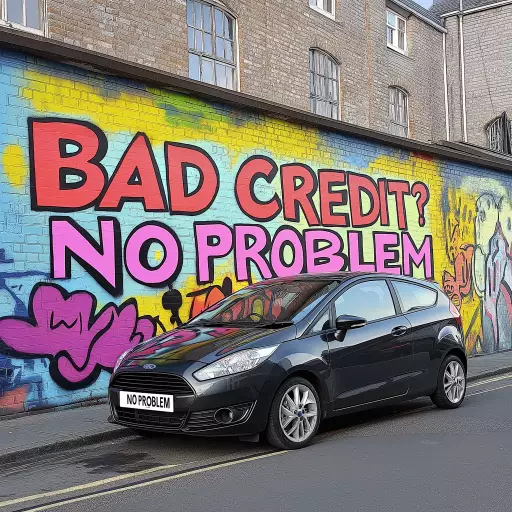Explore the Best AI Image Gallery

AI Art: Reimagining the Marketing Canvas
The world of marketing is constantly evolving, seeking new ways to captivate audiences and deliver impactful messages. Enter AI art, a revolutionary technology poised to reshape the creative landscape. From generating eye-catching visuals to personalizing brand experiences, AI-powered imagery offers marketers unprecedented opportunities. This blog post delves into the burgeoning realm of AI art in marketing, exploring its potential uses, ethical considerations, and future trends.
The Creative Potential of AI Art
AI algorithms can now create stunning visuals across diverse styles and mediums, from realistic photographs to abstract concepts. This opens up a world of possibilities for marketers:
- Eye-Catching Visuals: Generate unique, attention-grabbing images for social media campaigns, website banners, and marketing collateral.
- Personalized Content: Tailor imagery to individual customer preferences based on demographics, browsing history, and purchase behavior.
- Cost-Effective Creation: Reduce reliance on freelance artists or expensive design agencies by leveraging AI for rapid prototyping and visual asset generation.
- Dynamic Storytelling: Create interactive narratives and immersive experiences using AI-generated visuals that adapt to user choices.
Applications in Marketing
The potential applications of AI art extend across various marketing functions:
- Social Media Marketing: Generate shareable content, experiment with different visual aesthetics, and personalize posts for target audiences.
- Advertising Campaigns: Craft compelling visuals that resonate with specific demographics and drive conversions.
- Content Marketing: Enhance blog posts, articles, and ebooks with visually appealing graphics and illustrations generated by AI.
- Email Marketing: Personalize email campaigns with custom-generated images that improve open rates and engagement.
Ethical Considerations
While the potential of AI art is undeniable, its crucial to address ethical considerations:
- Copyright and Ownership: Questions arise regarding the ownership rights of AI-generated artwork. Who holds the copyright – the AI developer, the user, or the AI itself?
- Bias and Representation: AI algorithms can inherit biases present in training data, potentially leading to stereotypical or discriminatory representations in generated imagery.
- Transparency and Explainability: The decision-making process of AI models can be complex and opaque. Its important to strive for transparency in how AI art is created and used.
Future Trends
The field of AI art is rapidly evolving. Here are some trends to watch:
- Increased Accessibility: User-friendly AI art platforms will empower individuals with limited technical expertise to create stunning visuals.
- Customization and Control: Users will gain greater control over the creative process, fine-tuning AI outputs to achieve specific aesthetic preferences.
- Integration with Other Technologies: AI art will seamlessly integrate with virtual reality, augmented reality, and other technologies to create immersive experiences.
- Ethical Frameworks and Regulations: As AI art becomes more prevalent, industry-wide ethical guidelines and regulations will emerge to address concerns about bias, ownership, and responsible use.
Conclusion
AI art is revolutionizing the marketing landscape, offering unprecedented creative possibilities. By harnessing its power responsibly and addressing ethical considerations, marketers can unlock new avenues for engagement, storytelling, and customer connection. As AI technology continues to advance, we can expect even more innovative applications of AI art in the years to come.








](https://images.ai-img.art/thumbnails/150/9d51c5e673b4f2068b7b01abc35425a06f173b76303adf9ad29ca14302c25b18.webp)








](https://images.ai-img.art/thumbnails/150/51c93500396faff4e7fa8b42bc68033067b16b2230e3496e95c482a581ff0fe9.webp)


](https://images.ai-img.art/thumbnails/150/157712d76865d557120f9baf988de3d0525225295a2789c89bf2c4a5a96a03d1.webp)
![**Representation: A dog acting as a private tutor to a child. The dog holds a ruler in its paw and stands at the blackboard to explain a dog diagram to the child. Graphic style: Line drawing, cartoon style, influenced by Franco-Belgian comics, thick black lines, simplified design, vector, black and white only, in the style of Keith Haring or the French comic strip "Alinéa". [IMPORTANT]: A single continuous line extending from one side of the image to the other, minimalist, strong outlines, line drawing, without lifting the hand, ultra-simplified, no shading, entirely white image, drawing created in the center of a sheet of paper. --ar 16:5** - <@627984126871470085> (fast)](https://images.ai-img.art/thumbnails/150/7a854648a81e51241dcca8d24dd6e3bfcf07ad1df51baf401c9b729f4cf411fa.webp)






![**Representation: A teenager smiling while thinking about a friendly dog, a comic-style thought bubble with a friendly dog inside. Graphic style: Line drawing, cartoon style, influenced by Franco-Belgian comics, thick black lines, simplified design, vector, black and white only, in the style of Keith Haring or the French comic strip "Alinéa". [IMPORTANT]: A single continuous line extending from one side of the image to the other, minimalist, strong outlines, line drawing, without lifting the hand, ultra-simplified, no shading, entirely white image, drawing created in the center of a sheet of paper. --ar 16:5** - <@627984126871470085> (fast)](https://images.ai-img.art/thumbnails/150/6fc850f638e3dee0c4b121acecad2c8419e02bdeac7f871d625f1003c1c3abe1.webp)








![**Representation: A dog acting as a private tutor to a child. The dog holds a ruler in its paw and stands at the blackboard to explain a dog diagram to the child. Graphic style: Line drawing, cartoon style, influenced by Franco-Belgian comics, thick black lines, simplified design, vector, black and white only, in the style of Keith Haring or the French comic strip "Alinéa". [IMPORTANT]: A single continuous line extending from one side of the image to the other, minimalist, strong outlines, line drawing, without lifting the hand, ultra-simplified, no shading, entirely white image, drawing created in the center of a sheet of paper. --ar 16:5** - Variations (Strong) by <@627984126871470085> (fast)](https://images.ai-img.art/thumbnails/150/f4e034998ccd869d8a061fd12017514fcd92210eb33d4222dc9b54716223f4dd.webp)






